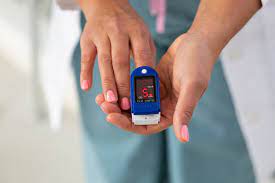- Empty cart.
- Continue Shopping
How the Body Regulates Oxygen Levels

Oxygen is vital for the survival of all human cells and tissues. The body has intricate mechanisms in place to ensure that oxygen levels are carefully regulated to meet the demands of various physiological processes.
1. Respiration
The primary way the body obtains oxygen is through respiration. This process involves breathing in oxygen-rich air and expelling carbon dioxide, a waste product of metabolism. The key components of respiration include:
- Inhalation: When you inhale, your diaphragm contracts and the intercostal muscles between your ribs expand, creating a negative pressure in the chest cavity. This negative pressure draws air into the lungs, allowing oxygen to enter the bloodstream.
- Exchange of Gases: Within the lungs, oxygen is exchanged for carbon dioxide in tiny air sacs called alveoli. Oxygen molecules bind to hemoglobin in red blood cells, while carbon dioxide is carried back to the lungs for exhalation.
- Exhalation: Exhalation occurs when the diaphragm relaxes and the chest cavity’s pressure increases. This forces carbon dioxide out of the lungs, which is then exhaled.
2. Oxygen Transport
Oxygen is transported through the bloodstream to every cell in the body. Hemoglobin, a protein found in red blood cells, plays a crucial role in carrying oxygen. Each hemoglobin molecule can bind to four oxygen molecules, allowing efficient oxygen transport.
3. Blood Oxygen Saturation
Blood oxygen saturation (SpO2) is a measure of the percentage of hemoglobin molecules in the bloodstream that are carrying oxygen. Healthy individuals typically have SpO2 levels of 95% or higher. Specialized medical devices, such as pulse oximeters, can measure SpO2 non-invasively by using light absorption to assess the oxygen saturation of hemoglobin.
4. Chemoreceptors
The body has chemoreceptors, primarily located in the carotid arteries and the aorta, that constantly monitor the levels of oxygen, carbon dioxide, and pH (acidity) in the blood. If oxygen levels drop or carbon dioxide levels rise, these chemoreceptors send signals to the brain to adjust breathing rate and depth to restore proper oxygen and carbon dioxide levels.
5. Hormonal Regulation
Hormones like erythropoietin (EPO) play a role in regulating oxygen levels. EPO, produced by the kidneys in response to low oxygen levels in the blood, stimulates the production of red blood cells in the bone marrow. An increase in red blood cell count can enhance the oxygen-carrying capacity of the blood.
6. Adaptations to Altitude
When exposed to high altitudes, where oxygen levels in the air are lower, the body adapts to maintain oxygen saturation. These adaptations include increased breathing rate and depth, as well as the production of more red blood cells to enhance oxygen-carrying capacity.
7. Regulation of Oxygen Delivery
The body also regulates the delivery of oxygen to tissues based on their metabolic needs. For instance, during exercise or times of increased demand, blood flow to muscles and other active tissues is enhanced to deliver more oxygen. Conversely, when at rest, blood flow to non-essential tissues may be reduced to conserve oxygen.
8. Reserve Oxygen Stores
The body stores a small reserve of oxygen in myoglobin, a protein found in muscles. This reserve can be tapped into during periods of increased demand, such as during intense physical activity.
In Conclusion, The regulation of oxygen levels in the body is a complex and highly orchestrated process involving the respiratory system, circulatory system, chemoreceptors, and hormonal feedback mechanisms. Maintaining adequate oxygen levels is essential for cellular function, energy production, and overall health. The body continuously monitors and adjusts oxygen levels to meet the demands of various physiological processes, ensuring that oxygen is efficiently delivered to every cell and tissue.








